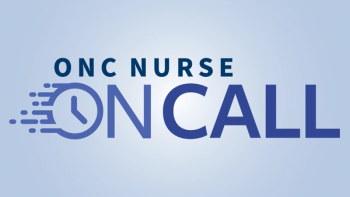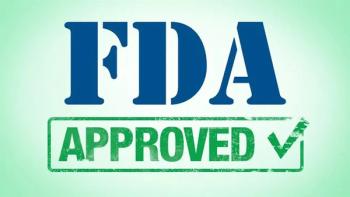
Managing CRS in Hematologic Cancers: A Nursing Perspective
CRS is a common but manageable toxicity of CAR T-cell therapy and bispecific antibodies. Learn strategies to identify and manage this adverse effect.
Cytokine release syndrome (CRS) is a known adverse effect tied to CAR T-cell therapies and bispecific antibodies; however, it is one can be easily mitigated with appropriate strategies, explained Beth Faiman, PhD, MSN, APN-BC, BMTCN, AOCN, FAAN, FAPO.
Faiman shared these perspectives in a presentation during the 9th Annual School of Nursing Oncology, an event hosted by Physicians’ Education Resource®, LLC.1
What Is Cytokine Release Syndrome?
CRS is described as a systemic inflammatory response triggered by the rapid and widespread activation of immune cells, most notably T cells, in response to CAR T-cell therapy and bispecific antibodies.2 Both therapies are designed to activate the patient’s own T cells to target and destroy cancer cells. When these therapies bind to cancer cells, they initiate an immune cascade that results in the release of a massive amount of cytokines into the bloodstream.3 This surge of cytokines, including interleukin-6, interferon-gamma, and TNF-alpha, causes a “cytokine storm,” Faiman said, which can lead to fever, hypotension, and a range of other symptoms, including flu-like illnesses and life-threatening multi-organ failure.
The risk and severity of CRS in both therapies are often correlated with the patient’s disease burden, with higher tumor load leading to a greater number of activated T cells and, consequently, a more intense cytokine release.
What Does Cytokine Release Syndrome Do?
CRS can be reported as mild, moderate, or severe and observed throughout organs and other areas of the body:
- Respiratory: hypoxia, dyspnea, capillary leak syndrome
- Liver: transaminitis, increased alkaline phosphatase, hyperbilirubinemia
- Kidney: increased serum creatinine, kidney insufficiency
- Hematologic: anemia, thrombocytopenia, neutropenia
- Constitutional: fever, fatigue, malaise, headache
- Neurologic: delirium, drowsiness, dysphagia
- Cardiovascular: sinus tachycardia, hypotension, arrhythmias
- Gastrointestinal: nausea, vomiting, diarrhea
- Musculoskeletal: increased creatinine phosphokinase, myalgia, weakness
CRS monitoring is conducted by checking for vital signs; review of systems and physical exam with a focus on cardiovascular, pulmonary, and neurologic systems; ruling out infection; and laboratory monitoring of complete blood count, C-reactive protein, cytokines, ferritin, and lactate dehydrogenase.
Faiman explained that CRS incidence can vary across the CAR T-cell products. “A lot of people get CRS, except for [those taking] lisocabtagene maraleucel [Breyanzi], which has a slightly lower incidence, but they’re not necessarily as severe.”
CRS grading with regard to fever, hypotension, and hypoxia is as follows:
- Fever: temperature ≥ 38 ºC (grades 1-4)
- Hypotension: (no grade 1); not requiring vasopressors (grade 2); requiring a vasopressor with or without vasopressin (grade 3); requiring multiple vasopressors (excluding vasopressin; grade 4)
- Hypoxia: (no grade 1); requiring low-flow nasal cannula or blow-by (grade 2); requiring high-flow nasal cannula, face mask, nonrebreather mask, or Venturi mask (grade 3); requiring positive pressure (grade 4)
At grade 3, fever is accompanied by grade 3 hypotension and/or grade 3 hypoxia.
How Should Cytokine Release Syndrome Be Managed?
CRS management is institution specific, Faiman said, adding “you take the highest symptom, and that’s your highest grade.” Faiman noted that CRS management is specific to the institution, providing the following management strategies for each American Society Transplantation and Cellular Therapy grade, which she uses at Cleveland Clinic Taussig Cancer Institute:
- Grade 1: Antipyretics and intravenous (IV) hydration, diagnostic workup to rule out infection, antibiotics if neutropenic, and consider use of tocilizumab (Actemra)
- Grade 2: Supportive care as in grade 1, IV fluid boluses and/or supplemental oxygen, tocilizumab with or without dexamethasone or methylprednisolone
- Grade 3: Supportive care as in grade 1, consider monitoring in ICU, vasopressor support and/or supplemental oxygen, tocilizumab plus dexamethasone 10 to 20 mg IV every 6 hours (or methylprednisolone)
- Grade 4: Supportive care as in grade 1, monitoring in ICU, vasopressor support and/or supplemental oxygen via positive-pressure ventilation, tocilizumab and methylprednisolone 1000 mg/day
“We give tocilizumab and dexamethasone in all our patients, primarily for lymphoma and myelomas, and then consider enhancing the supportive care for … grade 3,” Faiman concluded.
Editor’s Note: This is part 2 of a multi-part series of Beth Faiman’s presentation at the 9th Annual School of Nursing Oncology.
References
- Faiman B. Updates in novel therapies across hematologic malignancies. Presented at: 9th Annual School of Nursing Oncology; August 9, 2025; Nashville, TN.
- Cosenza M, Sacchi S, Pozzi S. Cytokine release syndrome associated with T-cell-based therapies for hematological malignancies: pathophysiology, clinical presentation, and treatment. Int J Mol Sci. 2021;22(14):7652. doi: 10.3390/ijms22147652
- Van De Vyver AJ, Marrer-Berger E, Wang K, et al. Cytokine release syndrome by T-cell–redirecting therapies: can we predict and modulate patient risk? Clin Cancer Res. 2021;27(22):6083–6094. doi.org/10.1158/1078-0432.CCR-21-0470
Newsletter
Knowledge is power. Don’t miss the most recent breakthroughs in cancer care.






















































































